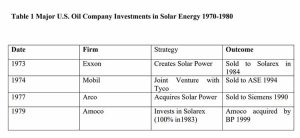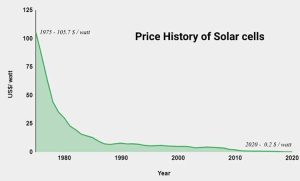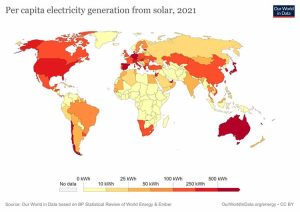SOLAR IN THE ANCIENT WORLD
The solar odyssey traces back its roots to ancient times. There is a general perception in today’s world that using solar energy to fulfil our necessities is a contemporary concept, but before civilizations used fossil fuels for heat and electricity, people relied on the power of the sun. Sun has been worshipped and regarded as the source of life in many cultures across centuries.
Socrates, the renowned philosopher, used to conduct classes for teaching people the art of passive solar architecture. The Romans, Native Americans, and Egyptians designed their houses to store the sun’s heat in the building walls during the day, so during the night when it is cold, the trapped heat could regulate the temperature in the house.
THE 20th CENTURY
From the 1900s, the United Nations and North Atlantic Treaty Organisation invested a lot in solar research. Bell Laboratories in 1954, invented the first practical solar cell, with an efficiency of 6%. Back then one solar panel used to cost around $ 6,00,000! In the past 50 years, the cost has been reduced by more than 500 times, and there has been a 90% drop in the cost in the past 10 years. In the year 1973, UNESCO held a solar-energy conference in Paris, which had 600 solar experts drafting the groundwork for the mass adoption of solar energy. The 1973 oil crisis made the transitory nature of non-renewable sources of energy as clear as day. After that incident, all nations started augmenting their solar research and investments. Subsequently, numerous oil companies began buying and creating solar energy enterprises to cash in on the trend.

SWANSON’S LAW
Swanson’s law of solar energy is a general law, based on observations, that the price of solar PV cells tends to drop 20 percent for every doubling of the global manufacturing capacity. The prevailing rates show that costs go down 75% every 10 years.

REASONS FOR RISING SOLAR POPULARITY

Many governments have commenced several world incentives and solar tax credits. The growth in the 1990s and the 2000s was mainly driven by Japan and European countries like Germany. Most popular examples of these widespread initiatives are the Million Solar roofs in the USA, Har Ghar Solar in India, Energiewende in Germany, etc.
WHAT DOES THE FUTURE HOLD?

Recently there has been a lot of commotion regarding the perovskite solar modules and transparent modules (also called the 4th generation modules). Perovskite cells are currently not operational because of their short lifetime. But its cost-effectiveness has shown a lot of promise, if normal panels cost about 4 to 10 dollars per Sq.ft, perovskite modules cost around 0.25 dollars per Sq.ft. Transparent modules could be combined with any surface, for example, glass panels of skyscrapers, or furniture inside the office, such fusion could make even physical infrastructure into a productive solar farm. So, one can further expect the prices to go down in the coming years.
By 2050, the IEA foresees solar installations to reach 5000 GW, of which more than half will be deployed in China and India, making solar power the world’s largest source of electricity.
About The Author :

Shreyas Gowda
The author is the Senior Vice President of Oorjan Cleantech (https://www.oorjan.com). Oorjan is one of India’s fastest-growing solar companies, co-founded by IITians and ex-bankers.











